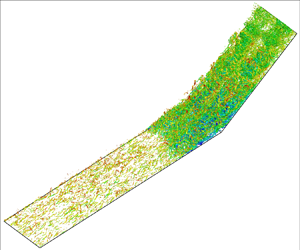Article contents
Effects of wall temperature on hypersonic shock wave/turbulent boundary layer interactions
Published online by Cambridge University Press: 14 August 2024
Abstract

Wall temperature has a significant effect on shock wave/turbulent boundary layer interactions (STBLIs) and has become a non-negligible factor in the design process of hypersonic vehicles. In this paper, direct numerical simulations are conducted to investigate the wall temperature effects on STBLIs over a 34° compression ramp at Mach number 6. Three values of the wall-to-recovery-temperature ratio (0.50, 0.75 and 1.0) are considered in the simulations. The results show that the size of the separation bubble declines significantly as the wall temperature decreases. This is because the momentum profile of the boundary layer becomes fuller with wall cooling, which means the near-wall fluid has a greater momentum to suppress flow separation. An equation based on the free-interaction theory is proposed to predict the distributions of the wall pressure upstream of the corner at different wall temperatures. The prediction results are generally consistent with the simulation results (Reynolds number Reτ ranges from 160 to 675). In addition, the low-frequency unsteadiness is studied through the weighted power spectral density of the wall pressure and the correlation between the upstream and downstream. The results indicate that the low-frequency motion of the separation shock is mainly driven by the downstream mechanism and that wall cooling can significantly suppress the low-frequency unsteadiness, including the strength and streamwise range of the low-frequency motions.
Information
- Type
- JFM Papers
- Information
- Copyright
- © The Author(s), 2024. Published by Cambridge University Press
References
- 7
- Cited by


